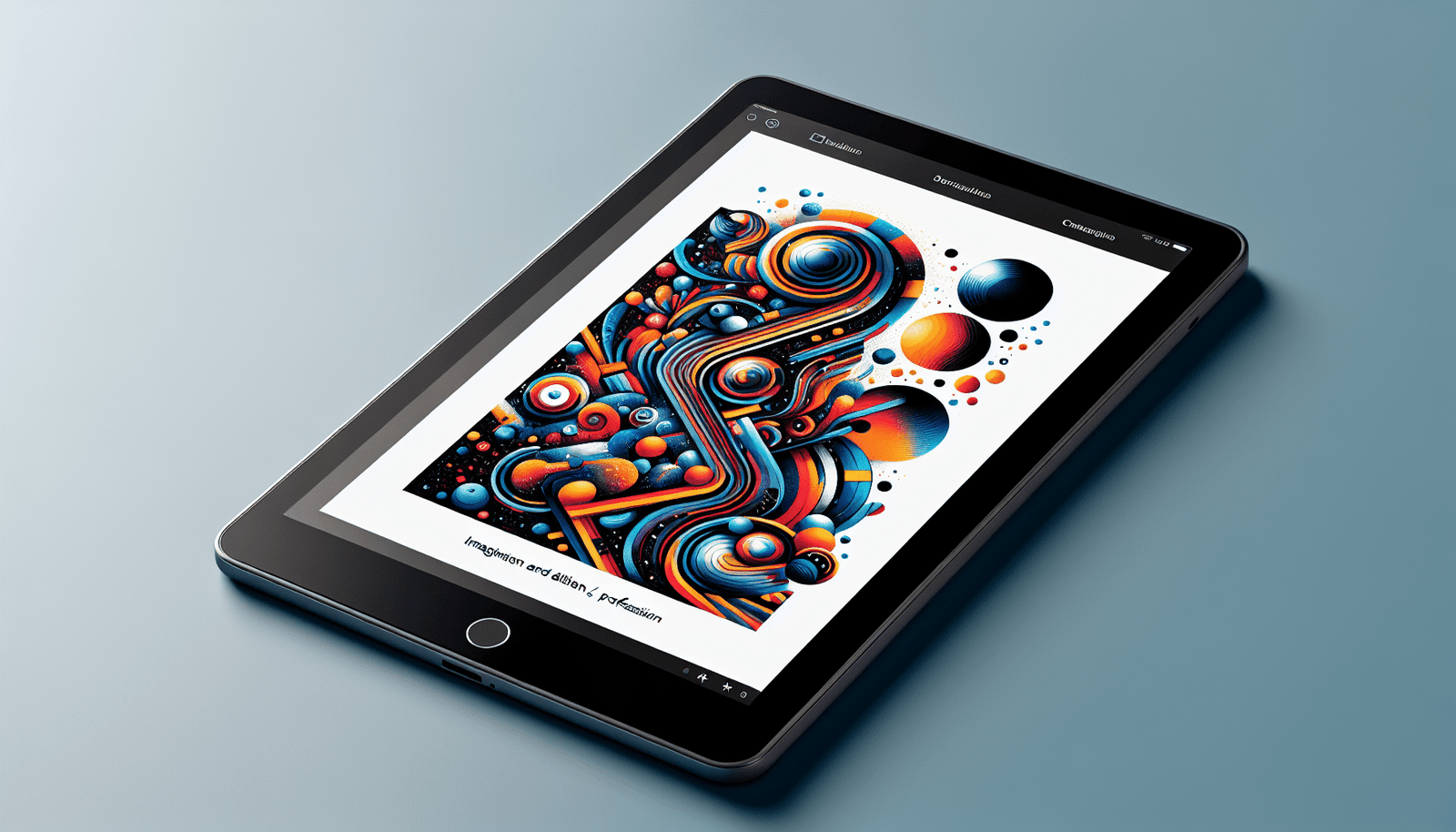In the bustling world of digital reading, a well-designed e-book cover can be your secret weapon for capturing reader attention. In “What Are the Key Strategies Behind Successful E-Book Covers That Captivate Readers?” you’ll explore the essential tactics authors and designers use to create compelling and eye-catching covers. You’ll delve into the power of color psychology, the impact of typography, and the importance of aligning cover design with genre conventions. By mastering these key strategies, you’ll be well on your way to creating an e-book cover that not only stands out but also draws readers in and encourages them to explore the wonders within your book.
Have you ever judged a book by its cover? If you’re being honest, chances are you have. In the world of e-books, where readers make split-second decisions about what to read next, having a captivating cover is essential. But what makes an e-book cover stand out? Let’s dive into the key strategies behind successful e-book covers that captivate readers.

Understanding the Importance of E-Book Covers
E-book covers serve as the first point of interaction between the reader and the book. A well-designed cover can significantly influence a reader’s decision to click, read a blurb, or make a purchase. Your e-book cover must therefore be an efficient marketing tool.
First Impressions Matter
In the digital marketplace, you have only a few seconds to grab your potential reader’s attention. Your cover must instantly convey what your book is about and give off the right tone. Think of it as the face of your book; it needs to be attractive and informative.
A Tool for Branding
Besides enticing readers, your e-book cover is also a reflection of your brand as an author. A consistent style across your book covers helps build your identity and makes it easier for readers to recognize your work.
Elements of a Captivating E-Book Cover
Let’s break down the elements that make an e-book cover captivating. Each element plays a unique role in grabbing attention and communicating the essence of your book.
Imagery and Graphics
Visual elements are the most straightforward way to captivate readers. High-quality images or graphics can set the tone for your book even before a reader glances at your title.
- Quality: Blurry or low-resolution images are a big no-no. Ensure the imagery is clear and professional.
- Relevance: The visual should be relevant to the book’s content. If your book is a horror novel, a picture of a sunset won’t cut it.
- Originality: Avoid generic stock images. Unique, custom graphics will give your cover a more personalized and professional appearance.
Title and Typography
Your title needs to be prominent and legible. Fonts and text placement are crucial in making sure your title is easily readable, even on smaller screens.
- Font Choice: Opt for fonts that complement the book’s tone. A thriller might use a bold, edgy font, whereas a romance novel might utilize a more whimsical script.
- Size and Placement: The title should be large enough to read without squinting but not so large that it overshadows other elements. Typically, placing the title at the top or center works best.
- Color: Use color to make the title stand out against your background image. Aim for a harmonious contrast that is easy on the eyes.
Subtitles and Taglines
If your book has a subtitle or tagline, treat it as an extension of the title. Make it smaller but ensure it is still legible and adds value to the cover.
Color Scheme
Color can evoke emotions and set expectations about your book’s tone and genre. Each color has a psychological impact that can influence potential readers.
| Color | Emotion/Association | Suitable Genre |
|---|---|---|
| Red | Passion, Energy | Romance, Thrillers |
| Blue | Calm, Trust | Non-Fiction, Self-Help |
| Green | Growth, Nature | Environmental, Fantasy |
| Black | Mystery, Power | Horror, Mystery |
Author Name and Branding
Including your name prominently establishes your brand. If you’re a well-known author, your name could be a significant selling point.
- Font: Use a consistent font for your author name across all book covers to build brand recognition.
- Placement: Typically, the author name is placed at the top or bottom of the cover. It should be large enough to read but not compete with the title.
Effective Use of Genre-Specific Elements
Understanding what works in your specific genre can set your cover apart. Different genres come with their own set of conventions and reader expectations.
Romance
In romance, warm colors and soft imagery tend to work well. Couples, floral elements, and elegant fonts are common.
Thriller and Mystery
Dark colors, shadowy figures, and bold, sans-serif fonts create the suspenseful tone that readers expect from thrillers and mysteries.
Sci-Fi and Fantasy
Futuristic or fantastical landscapes, imaginative creatures, and glowing or metallic elements often characterize sci-fi and fantasy covers.
Non-Fiction
Clarity and simplicity are key here. Clean lines, straightforward fonts, and professional imagery resonate well with non-fiction readers. Aim for a look that communicates authority and trustworthiness.
Table for Quick Reference
| Genre | Color Scheme | Common Imagery | Font Style |
|---|---|---|---|
| Romance | Warm colors (reds, pinks) | Couples, flowers | Elegant scripts |
| Thriller | Dark tones (blacks, grays) | Silhouettes, sharp objects | Bold, sans-serif |
| Sci-Fi | Cool tones (blues, metallics) | Space, robots, futuristic elements | Modern, sleek |
| Non-Fiction | Neutral colors | Professional imagery | Clear, straightforward |
Real-Life Examples
Let’s look at a few successful e-book covers and analyze what makes them effective.
Romance Cover Analysis
![Imaginary Romance Book Cover]
- Imagery: Features a couple against a sunset, which instantly conveys romance.
- Title: Elegant script font with flowing lines, matching the romantic theme.
- Color Scheme: Warm tones make the cover inviting and passionate.
Thriller Cover Analysis
![Imaginary Thriller Book Cover]
- Imagery: A shadowy figure in an alleyway sets a suspenseful mood.
- Title: Bold, sans-serif font that screams urgency.
- Color Scheme: Dark tones with pops of red to signify danger.
Tools and Resources for Designing E-Book Covers
Creating a captivating e-book cover doesn’t necessarily mean you have to be a design expert. There are multiple tools and resources available to assist you.
Online Design Tools
- Canva: User-friendly and offers plenty of templates tailored for e-book covers.
- Adobe Spark: Provides advanced features and customization options.
- Book Brush: Specializes in book-related graphics, offering templates and customization.
Hiring a Professional
If designing isn’t your forte, hiring a professional might be the way to go. Platforms like Fiverr, 99Designs, and Upwork have a plethora of designers specializing in book covers.
Best Practices and Common Mistakes
Even with the best tools and ideas, there are common pitfalls you should avoid to ensure your cover is as effective as possible.
Do’s
- Consistency: Maintain a consistent style across different books to build your brand.
- Legibility: Ensure the text is readable, even at thumbnail size.
- Testing: Show your cover to a test audience to gather feedback before finalizing.
Don’ts
- Overcrowding: Avoid cluttering your cover with too many elements.
- Ignoring Genre Conventions: While uniqueness is crucial, not adhering to genre norms can mislead readers.
- Low-Quality Photos: Never use low-resolution or blurry images as they can tarnish the overall professionalism of your book.
The Impact of Market Trends
Keep an eye on current market trends to stay relevant. As with fashion, design trends change, and being aware of these can keep your covers fresh and attractive.
Minimalism
Currently, minimalism is a big trend across various genres. Clean lines, simple graphics, and plenty of white space can make your cover look modern and professional.
Bold Typography
Bold and eye-catching fonts are gaining popularity. They draw attention and can make your cover stand out in a sea of thumbnails.
The Role of A/B Testing
A/B testing can be a game-changer in determining the best cover for your book. By testing two different designs, you can get actionable insights into what resonates more with your target audience.
How to Conduct A/B Testing
- Create Two Covers: Have two different versions ready.
- Set Up a Poll: Use social media or email lists to ask your audience which cover they prefer.
- Analyze Results: Look at the data to see which cover performs better.
Conclusion
Designing a captivating e-book cover is both an art and a science. From choosing the right imagery and color scheme to understanding genre conventions, multiple factors contribute to making a successful cover. Remember that your cover is not just eye candy but a crucial marketing tool that can make or break a reader’s decision to buy your book.
So next time you’re working on an e-book cover, keep these strategies in mind to ensure your cover is not only eye-catching but also an effective ambassador for your book. Happy designing!



